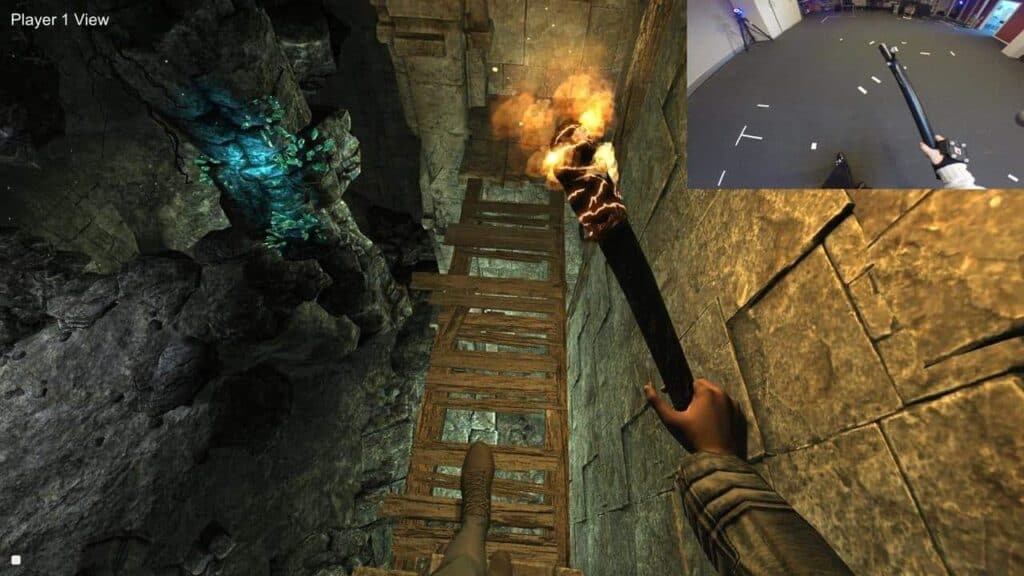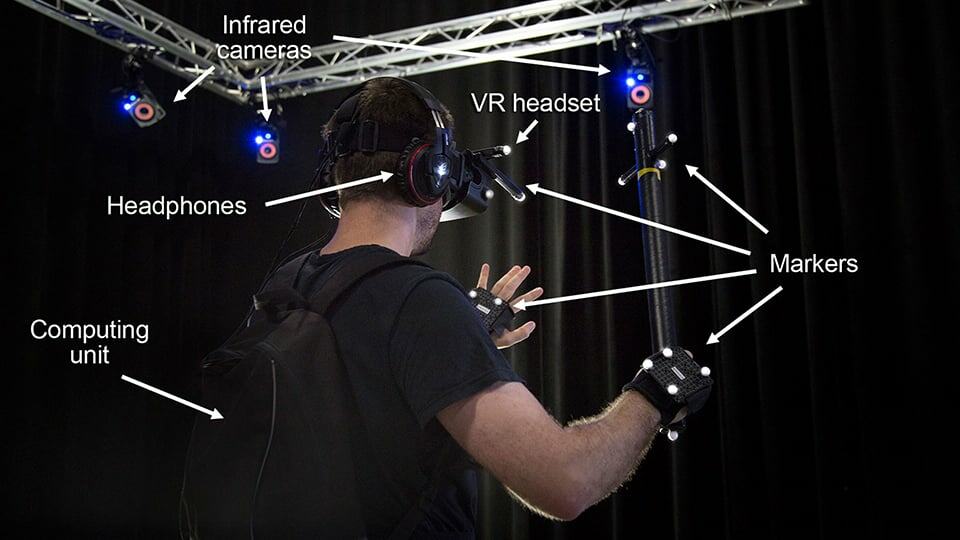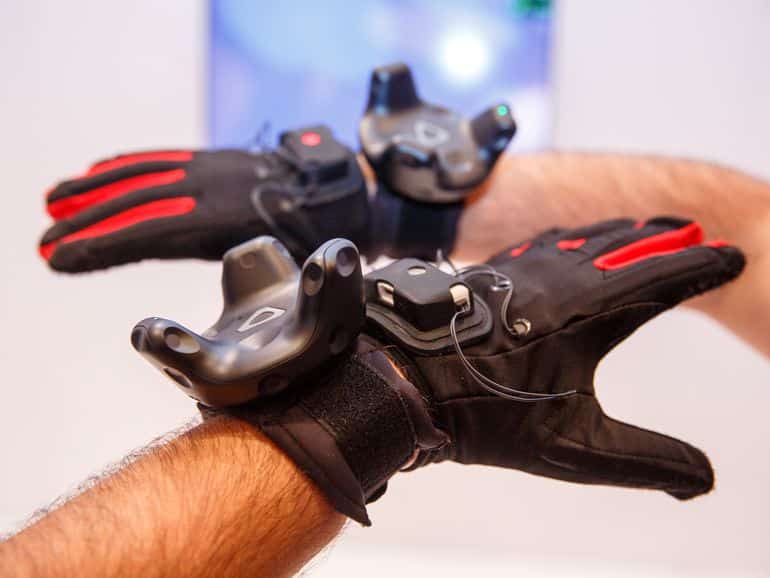Whether or not you want to play Tornuffalo, it’s a glimpse into the future of full-body VR gaming. And maybe a glimpse into our deeply immersive future.
The name is an obvious play on the words “tornado” and “buffalo”. Growing up in scrublands of Oklahoma (“Tornado Alley”), I can’t believe our hyperactive five-year old minds didn’t come up with the name. But we definitely got the idea of flying objects – I spent many a summer night sleeping under the bed while the sirens wailed. Maybe that’s why end-of-the-world apocalyptic visions come natural to me.
The gameplay is simple. You find yourself in the middle of street with a full virtual body. All kinds of objects come flying at you – rocks, fire hydrants, doors, cars. And a couple of airborne bison. Hit or kick the objects and earn points. If the objects hit your body, you die. As I said, simple.
But what’s interesting in Tornuffalo is that you don’t need a full-body VR suit or a room of sensors to have the experience. Just three Vive trackers, one attached to your belt and the other two on your shoes.
As you can see, the tagline for Tornuffalo is appropriate.
Be prepared to be terrified – of breaking everything in your room.
Doing this in my cramped NYC apartment would definitely get my neighbors’ attention.
Full-body VR Gaming
With virtual reality developing at lightning speed, everyone is focusing on the hardware – VR headsets and hand controllers. But it’s the experience that’s important. And we are quickly moving toward a world of full-body VR gaming experiences.
Over the past two years, we’ve seen the power of VR to reshape storytelling. But our framework is essentially visual experience. We’re a bit like disembodied heads floating through 360° videos and virtual environments.
As compelling as these experiences are, storytelling will change dramatically when you’re virtually there as an embodied being. You can hear a future generation now: “Did people really sit in rows of chairs in a theater?”
At the 2016 Sundance Film Festival, we tried out Real Virtuality, an early full-body VR experience. It was utterly remarkable. It’s one thing in VR to have the visual experience of heights. It’s a completely different feeling to step on a broken wooden walkway with your virtual feet in sync with your physical movements.
Your senses go into overdrive. Your body freezes.

Real Virtuality was a complicated setup, with numerous sensors on your body and multiple infrared cameras mounted on metal trusses. It was pushing the boundaries of the technology of its time and required technical support. It wasn’t something you’d try to set up at home.

But what a difference 18 months can make. Tornuffalo gets you a full-body experience with nothing more than the basic HTC Vive setup and three trackers. The only feature missing is the haptic feedback provided by a vest.

Completing the illusion
Virtual reality is remarkable in the way that it hijacks your senses. Full-body experiences will bring the illusion another step closer to completion. There’s tremendous potential in these developments across every facet of human activity. And the potential downside will come with equal speed.
On the face of it, Tornuffalo is just a simple VR game. You can pick it up for a dollar in the Steam Store. But it shows how rapidly the technology is progressing. And it may serve as an apt metaphor for how the future is going to throw everything at us at once.
Game on.
Emory Craig is a writer, speaker, and consultant specializing in virtual reality (VR) and generative AI. With a rich background in art, new media, and higher education, he is a sought-after speaker at international conferences. Emory shares unique insights on innovation and collaborates with universities, nonprofits, businesses, and international organizations to develop transformative initiatives in XR, GenAI, and digital ethics. Passionate about harnessing the potential of cutting-edge technologies, he explores the ethical ramifications of blending the real with the virtual, sparking meaningful conversations about the future of human experience in an increasingly interconnected world.

